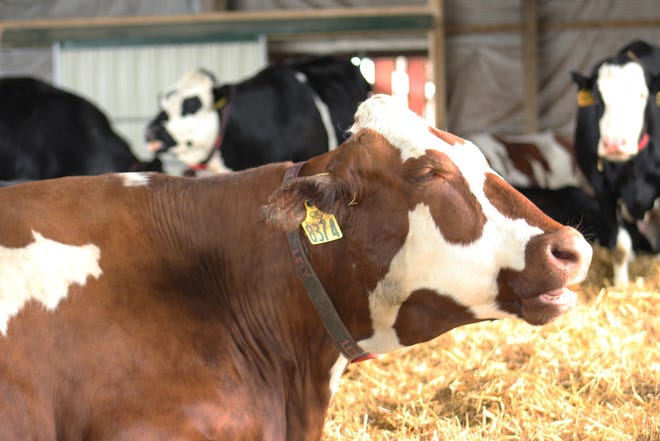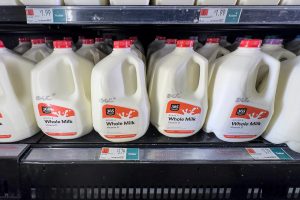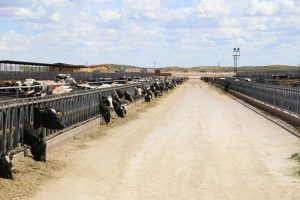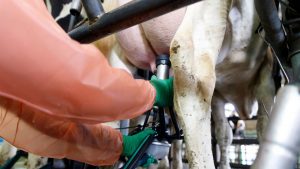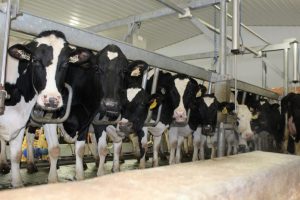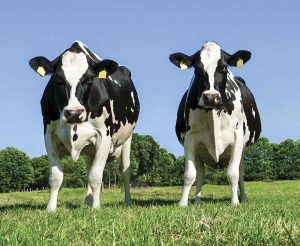
Hypocalcemia is the deficiency of calcium in the cow’s bloodstream. This condition most often happens with heifers after calving because calcium content in milk is at its highest prior to giving birth. Increasing milk production with a higher calcium content leads to lower calcium levels in the bloodstream, which can be dangerous for your herd if not properly treated.
Oetzel said if delayed hypocalcemia goes untreated, it can lead to a host of other diseases, including mastitis, dystocia, metritis and high levels of non-esterified fatty acids, which can cause immune function and fertility issues. Cortisol hormone levels are also increased by both temporary and delayed hypocalcemia during and after calving, he explained. Cortisol levels are even higher in cows afflicted by clinical milk fever, which is extreme and acute calcium deficiency. However, milk fever has a much lower risk than hypocalcemia.
Untreated subclinical hypocalcemia will also lead to less milk production over time due to the damage caused, as theorized by a study Oetzel referenced which found that cows with transient hypocalcemia produced the most milk, while cows with delayed hypocalcemia produced the least milk.
“Cows that start low are just higher producing cows,” Oetzel said. “If they fix it on their own, that’s great. Then persistently, some chronically hypercalcemic cows do not do particularly well.”
The risk for developing hypocalcemia is high – two studies agreed that the average risk is about 50% after the second lactation, and the risk becomes higher for older cows, Oetzel said. When cows prepare to give birth, they increase their calcium production to benefit the calf. Some cows with low calcium levels also suffer from lactational osteoporosis, which causes them to draw calcium from their bones rather than their bloodstream.
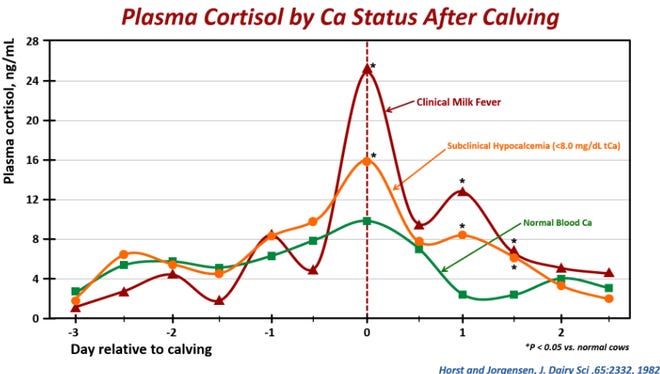
Temporary hypocalcemia can actually increase milk production around calving time, where after a few days the milk production level goes back to normal. There are usually no lasting effects of the temporary condition and it’s not a cause for concern. But, Oetzal said, dairies should always be on the lookout for hypocalcemia lasting longer than 2-3 days post-calving. Cows should be tested around 4 days after calving, because this is the point where temporary hypocalcemia typically disappears, Oetzal explained.
“We really ought to be doing this testing in our environment, because we’re trying to do real-time decision making,” Oetzel said. “We don’t have a great outside (the farm) calcium test because it’s an awful lot of money what with certain types of testing equipment. There’s possibilities that this is going to get better and we’re going to have some options out there.”
He said you should also make sure the herd is doing well on the prefresh diet, including enough time for the cows to benefit from its nutrients, because hypocalcemia may sometimes be a secondary indicator of a different condition that may come from poor diet. Even so, detection is important so that treatment can begin as soon as possible, especially so that a secondary condition can be identified, he said.
Dairy farmers need to be kept on their toes to continue monitoring for this condition, Oetzel said, noting that each dairy farm should have an action plan for detecting and treating subclinical hypocalcemia in their herds. The most practical method of treatment is to administer oral calcium supplements, although cows should still be monitored in case the hypocalcemia comes from any underlying conditions that supplements won’t fix.
Intravenous calcium doses can also be used, although Oetzel warned that you should never give it to a standing cow because it can introduce many negative effects. A prefresh diet low in calcium can be used in subclinical hypocalcemia prevention. Using zeolite A supplements, or sodium aluminium silicate, in the diet can also prove useful in prevention.
“Do not give IV calcium, ever, to a standing cow, because you’re going to get a tremendous rebound on the backside of that,” Oetzel said. “Only give, if you need it, oral calcium that provides that support that we need through this critical time period.”
